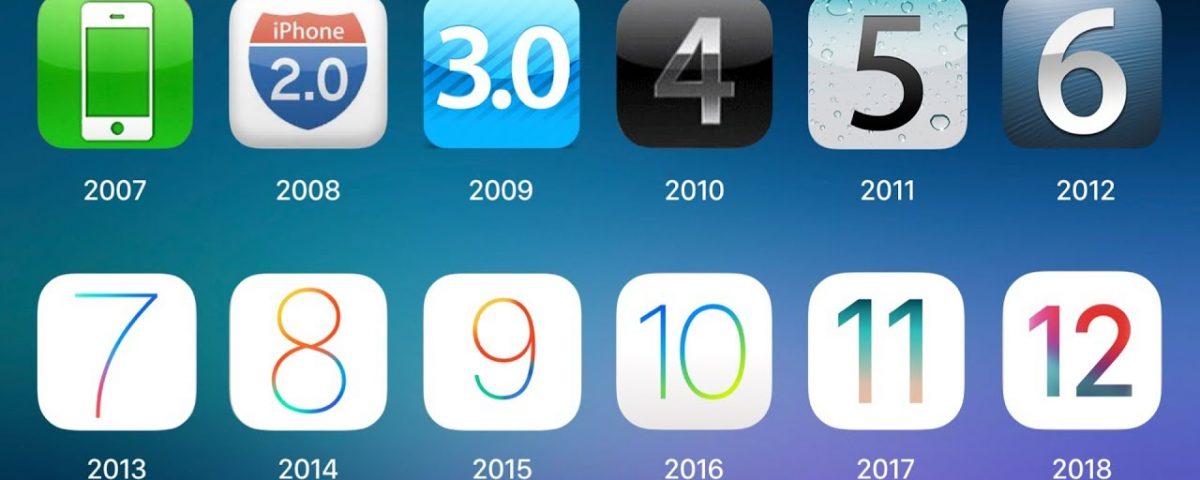The History of iOS App Development

API vs Web Service: What’s the Difference?
8th April 2021
How to Improve Your Website’s Google Ranking
10th April 2021The rise in the use of smartphones has shaped the demand for mobile app development. Currently, ios app development is the one ruling the market and many students aspire to become iOS developers. Let us take a look at how iOS app development shaped up over the years and what factors made it the most popular platform for app development.
iOS 1
The Birth of the iPhone [2007] iOS, then known as iPhone OS, was unveiled by Steve Jobs at the Macworld event in early 2007. At that time, iPhone had limited features and had no app store. The main attraction of iPhone at that time, however, was that though other devices were still using resistive touchscreens, Apple revolutionized its iPhone with capacitive touch capabilities. This made the whole experience of a smartphone smooth and swift to users. The first iPhone was a ‘magical’ product which was already 5 years ahead of any mobile phone at that time.
iOS 2
Launch of the App Store [2008] In its initial stages, iPhone did not have an app store. All you had were built in apps by Apple. The release of the App Store in 2008 built into the OS meant that users can browse and then download apps directly on the device. Apple also provided the feature that accepted itunes accounts so that people could directly download apps from the store using the same account they used to download songs from itunes on their computers. Some other features were also added like Microsoft Exchange support that allowed for push emails, calendars and contacts from other sources and Apple’s MobileMe.
iOS 3
iPhone Enhancements [2009] iOS 3 was a core update launched on all the iphone 3G models. In it was introduced the ability to cut, copy and paste. Spotlight Search that lets users search for anything throughout the system was also launched in this update. Other features added were push notifications for 3rd party apps, MMS, voice control, USB and Bluetooth tethering, and the Find My iPhone app. In this version, the native camera app was updated to support video recording and the tap-to-focus feature.
iOS 4
Multitasking, Retina & FaceTime [2010] Before the launch of iOS 4, iPhone was unable to multitask. Unbelievable right? But this was the truth. With iOS 4 came the multitasking bar for iPhones. With this multitasking feature, apps could work in the background allowing users to switch between apps faster, with its previously saved state intact. Apple also made way for app folders and custom wallpapers that replaced the black wallpaper of the homescreen. Facetime and Retina were huge developments and required the iphone app developers to develop apps that looked good on high resolution. WiFi tethering or Personal Hotspot were also included in later updates of iOS 4.
iOS 5
Notification Center, Siri & More [2011] The most impressive update of Apple came in 2011 in the form of iOS 5. iOS 4 was already immensely popular with its Retina display and with the launch of iOS 5 with more advanced features, Apple simply blew out any competition. The most popular upgrade in iOS 5 was the voice assistance that brought information to the users fingertips. This feature became popularly known as SIRI. It also included voice recognition. iCloud was also released, making backups and setting up new iOS devices easy. The sleek notification bar where you could interact with the notifications was also launched in this update which provided a much needed relief from the mini windows taht used to pop up right in your face whenever there were any notifications. iOS 5 saw many other remarkable improvements like the Reminders app, iMessage, Newsstand,Twitter integration and multitasking gestures with a split keyboard on the iPad.
iOS 6
Apple Maps & Passbook [2012] In iOS 6, Apple tried to move out of the shadow of Google and launched its own Apple map app with turn-by-turn voice navigation. They removed the native Google Maps and YouTube app found in previous versions of iOS. However, Apple failed in this venture as people preferred Google maps more. Google maps was later re-releases in the App store. Making an entry into the world of digital wallets and payments with a mobile device Apple introduced Passbook. Do Not Disturb mode, Guided Access, panorama photos on the native camera app and Facebook integration allowing users to update status with a button on the notification center were some other features added.
iOS 7
Small and Big Changes [2013] iOS 7 brought in a completely new user interface. Apple freshened up all of its core apps with a new coat of paint, bringing them in line with the new look of iOS. Most of the apps are white with a simple one-color flourish, and completely devoid of texture. . Multitasking is massively improved in iOS 7, both in interface and implementation. With iOS 7, the days of opening up the App Store to click “update all” are over. The OS now offers the option to update all apps on your system without asking. iOS 7 also saw the introduction of many important features including Control Centre that is is Apple’s version of the quick-settings toggles found on Android phones. Some other upgrades include launch of AirDrop, an animated weather app and many more small changes.
iOS 8
Opening up [2014] While iOS 7 brought about the biggest visual change to the platform since its inception, iOS 8 is a refinement of the design iOS 7 established. The most impressive new feature in iOS 8 is what Apple is calling “Continuity.” iOS 8 works with Apple’s new Mac OS X 10.10 Yosemite to provide a completely new level of interactivity between an iPhone or iPad and a Mac computer. With iOS 8 and OS X 10.10, users will be able to seamlessly pass information between their mobile devices and their desktop computers. iOS finally supports Third Party Keyboards and forayed into the health and home industry with its healthkit app and home automation system apps. Family Sharing. With iOS 8, Apple is making it easier for families with multiple iOS devices to share everything from photos and calendars to purchases from iTunes.





